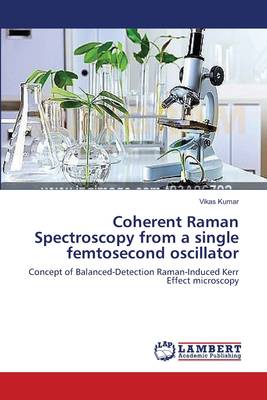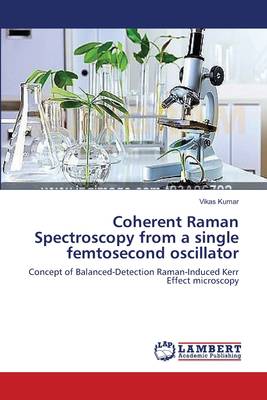
- Afhalen na 1 uur in een winkel met voorraad
- Gratis thuislevering in België vanaf € 30
- Ruim aanbod met 7 miljoen producten
- Afhalen na 1 uur in een winkel met voorraad
- Gratis thuislevering in België vanaf € 30
- Ruim aanbod met 7 miljoen producten
Zoeken
Coherent Raman Spectroscopy from a single femtosecond oscillator
Concept of Balanced-Detection Raman-Induced Kerr Effect microscopy
Vikas Kumar
Paperback | Engels
€ 61,95
+ 123 punten
Omschrijving
Coherent Raman scattering (CRS) microscopy is quickly gaining recognition in biomedical and pharmaceutical fields due to its capability of non-invasive, level-free chemical imaging of tissues and cells. It has enhanced sensitivity to many orders of magnitude as compared to its incoherent counter-part spontaneous Raman scattering. CARS, SRS and RIKE are the three most popular CRS techniques. Very few books are available which explain the three techniques altogether on the basis of a single mathematical framework. This book develops a simple and direct mathematical framework for nonlinear light-matter interaction using semi-classical approach that can explain and support all the experimental work done in CARS, SRS and RIKE within classical point of view. Using the same framework, the book explains the novel very promising technique called balanced-detection Raman induced Kerr-effect (BD-RIKE) microscopy. The book also explains the pros and cons of the CARS, SRS and BD-RIKE processes which are supported by results of several experiments done on a fiber-format versatile compact CRS setup developed at Politecnico di Milano.
Specificaties
Betrokkenen
- Auteur(s):
- Uitgeverij:
Inhoud
- Aantal bladzijden:
- 248
- Taal:
- Engels
Eigenschappen
- Productcode (EAN):
- 9783659351877
- Verschijningsdatum:
- 4/06/2014
- Uitvoering:
- Paperback
- Afmetingen:
- 150 mm x 220 mm
- Gewicht:
- 388 g

Alleen bij Standaard Boekhandel
+ 123 punten op je klantenkaart van Standaard Boekhandel
Beoordelingen
We publiceren alleen reviews die voldoen aan de voorwaarden voor reviews. Bekijk onze voorwaarden voor reviews.








